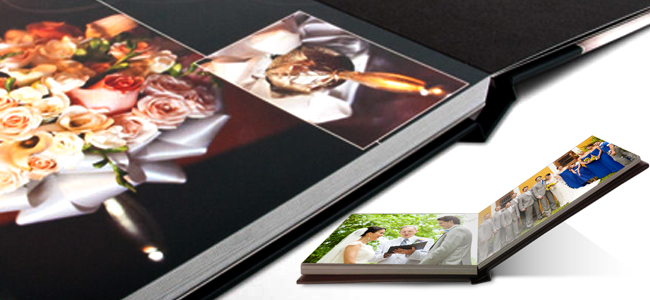Whether you’re a newlywed who wants to choose the right way to preserve your wedding memories or a photographer printing who wants to explain your product line to a client, there’s no better way to do it than with a professional quality Photo Album or Photo Book since they sound like similar products, they’re often confused with one another. this guide can help you make the right choice every time!
1. Paper & Print type
One of the most obvious differences between Albums and Books is the paper type. Photo Album photos are printed on Kodak Endura professional Lustre photo paper, just like a traditional Photo Print. Lustre paper (the industry standard for photo printing) has a slight sheen, and is protected by a UV coating.
Photo Book images are printed directly onto your choice of press paper (semi-gloss, linen, matte, or uv gloss). Although it differs from photographic paper, offset paper is a much better option for printing photos than typical computer paper. Plus, since it’s easier to write on affset paper, Photo Books are perfect for use as guest books and travel journals
2. Construction
Photo Album images are printed on photographic paper that is reinforced by a premium substrate. This material makes the pages rigid, thus ensuring the finished product’s long-term durability. Once printed, all of the Album pages are expertly matched with a handcrafted cover to create an archival quality, heirloom Album.
Album pages are available in both a “thin” (approximately the width of a dime) and a “thick” (approximately the width of a penny) style.
The pages in a Photo Book are printed directly onto press paper, and then bound with inimitable precision using our proprietary construction technology. The final steps in construction differ based on the chosen page style
3. Page style
All Photo Albums have what is called “lay flat” or “flush mount” pages, meaning there is no break or binding that disrupts the flow of a spread from page to page. This allows you to create striking panoramic spreads or to get creative with two-page layouts.
Photo Books are available in a classic style (with traditional book binding) or a lay flat style. The lay flat Photo Book style differs from an Album in that there is a small “gutter” between the two pages in each spread.
4. Cover options
Hardcover Photo Book & Photo Album cover options include:
- Custom Canvas Photo
- Custom Luster Photo
Cover embossing is available for both products.
5. Pages available
Album builders can include up to 50 spreads/100 pages (after choosing thin pages) or 25 spreads/50 pages (after choosing thick pages). Since Photo Book pages do not include a substrate, more pages can fit into a Photo Book than an Album. You can include up to 70 spreads (140 pages) in a single classic style book
6. Size options
Photo Albums are available in the following sizes:
- 5×5″
- 8×8″
- 8×10″ / 10×8″
- 8×12″ / 12×8″
- 10×10″
- 12×12″
Photo Books are available in the following sizes:
- 5×5″
- 5×7″
- 8×8:
- 8.5×11″
- 10×10″
- 12×12″
7. Finished product
Photo Albums are a substantial, heavier option, kind of like a formal coffee table book. Photo Books, however, are more lightweight, and are thinner, thus taking up less room on the couch or on the shelf.
Since photo albums are made with high-quality printing techniques, material, and mounting and construction methods, albums are more much expensive than photo books. With so many variables involved, that’s why photo albums range from several hundred to several thousand dollars. The most attractive aspects of a photo album are its durability and its sophisticated style. If you want something that will last a lifetime, a handcrafted photo album is worth the investment.
At the end, the photographer has to decide which factors are more important and go with the product that best fits his/her preferences and needs.
